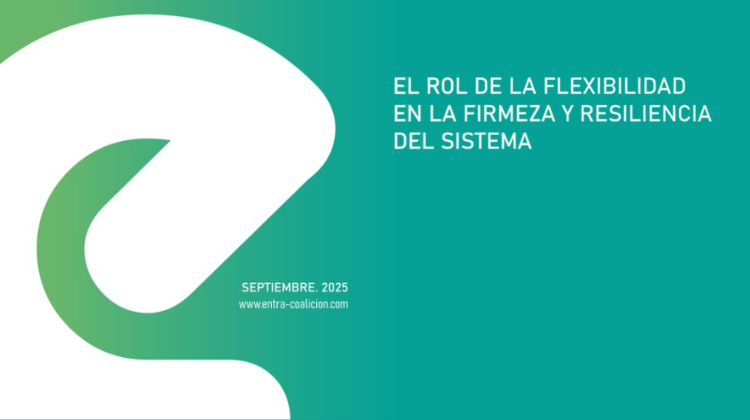Following Red Eléctrica de España’s warning to the CNMC about the urgent need to modify Operating Procedures to prevent further voltage fluctuations, ENTRA Aggregation and Flexibility has revived a long-standing idea within the sector: demand-side flexibility is not a complement but a structural pillar of the energy transition.
The report, “The Role of Flexibility in System Firmness and Resilience,” presented at the Energy Club in Madrid, highlights that active consumer participation can contribute to both supply security and the integration of renewables while reducing system costs.
“Demand-side flexibility is a strategic asset that provides firmness and resilience to the electricity system, lowering costs and accelerating renewable integration,” said Laura Moreno, representative of ENTRA.
The organisation proposes specific measures that go beyond technical diagnosis. Among them are the creation of a primary regulation market (FCR) allowing the entry of storage and distributed resources, the removal of the 100 MW minimum requirement to access secondary regulation, and the introduction of a capacity payment in tertiary regulation, following models from countries such as Germany or Portugal.
It also calls for the use of submetering and the promotion of flexible connections and tariffs as tools to optimise network use and enable new demand integration without the need for large infrastructure investments.
During the subsequent discussion, representatives of member companies provided practical insights into how flexibility can be applied. Anna Casas, from Octopus Energy, noted that the electrification of new consumption patterns, such as electric vehicles, could strain the grid if poorly managed, but “when well integrated, it becomes an opportunity to strengthen it.”
Similarly, Gorka Martí, from sonnen, highlighted the role of batteries as a key tool for reducing user costs without compromising activity, and called for “a primary regulation market that fosters competition and removes barriers.”
Meanwhile, Víctor Pérez, from Plexigrid, stressed that “regulatory progress must be linked coherently: incentivising flexibility, generalising flexible connections and local markets, evolving tariffs, and digitalising the grid towards an intelligent operator (DSO 2.0).”
Alicia Carrasco, ENTRA’s Executive Director, emphasised that demand management, behind-the-meter storage, and vehicle-to-grid operations “not only benefit consumers but also strengthen the system, providing supply security and enhancing industrial and SME competitiveness.”
She also agreed that the solution lies in promoting demand-side flexibility as a structural, rather than temporary or restrictive, response — in contrast with the short-term measures proposed by Red Eléctrica in its public consultation.
In this context, ENTRA proposes a more fundamental shift: to permanently open markets to demand-side participation and advance towards a flexible, digital, and decentralised energy model.
The document concludes that system firmness no longer depends solely on generation, but on the ability to coordinate thousands of small distributed resources. “It is not about adding more capacity, but about using what we have more intelligently,” the report concludes. In a system where renewables already account for more than 60% of generation, this vision could be the difference between a vulnerable model and a resilient one.






























